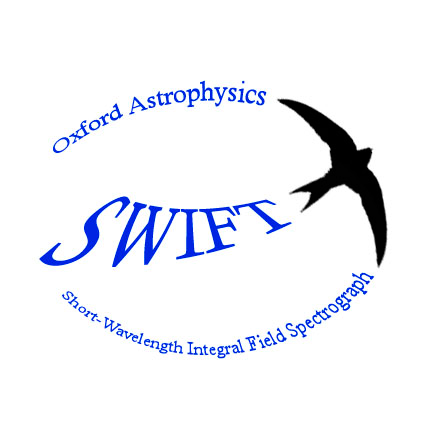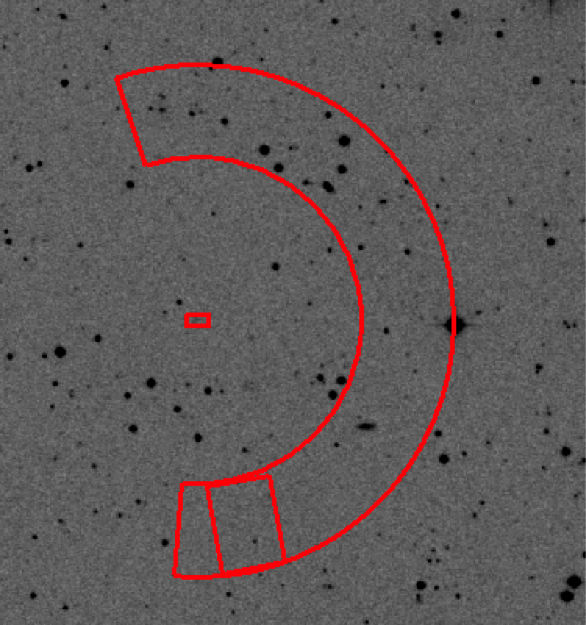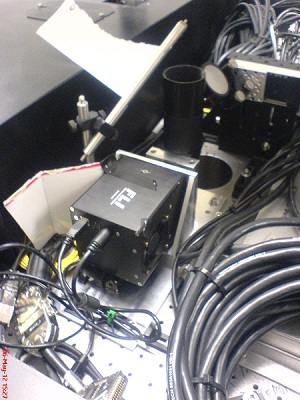
|
The Oxford SWIFT Spectrograph |

|
||
The SWIFT Spectrograph GuiderIn 2012, Fraser Clarke has equipped SWIFT with a separate off-axis guider, so as to improve the tracking accuracy for long exposures. The guider field of view is ∼88 × 66 arcseconds, rotated at an angle of 10 degrees East of North (at the default position angle of SWIFT — cass_ring=100 degrees). The fully illuminated field of view is a circle around the detector centre with diameter of ∼70 arcseconds. Outside of this, flux drops off quickly as does the image quality. Within this ∼1 arcminute FoV, guide stars up to Rmag < 20 can be used to ensure excellent tracking during long exposures, with ±0.2 arcsecond residuals. The guider also allows many long exposures on faint objects to be registered relative to each other, so that it is now possible to observe faint targets that cannot be seen in a reduced single exposure data cube, either in the line or the continuum. The guider is located ∼3.5 arcminutes south-west of the SWIFT field of view (centre ∼210″ S and 40″ W), at the default position angle. Increasing the position angle on SWIFT (increasing the cass_ring angle) swings the guider to the North-West of the central field. The total range of the cass_ring for SWIFT is 90 degrees to 290 degrees, with the default position angle (N up, E left) at 100 degrees ring angle. There is a ds9 template file (SWIFTGuiderRegion.tpl) available to overlay on dss images, which helps identify guide stars.
The picture above shows the ds9 template superposed on the field of view around a faint target. The C-shaped region is accessible to the guider. The large rectangle shows the guider FoV at the default Cass ring orientation.
The SWIFT guider is mounted on the P3K optical bench, on the side facing the back of the 200 inch primary mirror, as shown in the CAD layout (above left). it sits right next to the hole in the optical bench that the on-axis beam passes through. The SWIFT guider uses only COTS parts. The FLI CCD camera was an (unused) acquisition camera already in SWIFT. A 2:1 reimaging system with stock lenses provides ∼0.25″/pixel sampling on the detector and a 1-arcmin diameter field located approximately 4-arcmin off-axis. The volume available on the top-side of AO bench was very limited; only 350×200×200mm. The guider fits comfortably inside this envelope. The camera is mounted on a linear stage to allow it to be co-focused with SWIFT. A detailed manual for the SWIFT guider (prepared by Fraser Clarke) is available. A poster presentation about the SWIFT guider, presented by Fraser Clarke at the Palomar Science Meeting 2012 can be found here.
|
||||
| Site © 2009, The University of Oxford Physics Department. Comments about this website: email n.thatte1@physics.ox.ac.uk. | ||||

